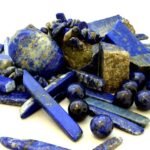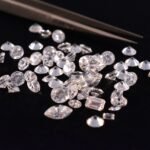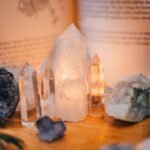Introduction
Gemstones have captivated humanity for centuries, admired not only for their beauty but also for their value, spiritual energy, and cultural significance. Unfortunately, the gemstone market is also full of imitations, synthetics, and treated stones sold as natural gems. This makes it critical for buyers, collectors, and crystal enthusiasts to know how to identify real gemstones. Learning the difference between genuine and fake stones helps you avoid financial loss, ensures authenticity for spiritual practices, and protects you from misleading sellers. Whether you’re shopping for jewelry or adding to your healing crystal collection, the ability to distinguish authenticity gives you confidence and peace of mind.
What Makes a Gemstone Real vs Fake, Synthetic, or Treated?
Before exploring tests, it’s important to understand the different categories of gemstones. Natural gemstones are formed in the Earth over millions of years and usually contain inclusions and unique characteristics. Synthetic gemstones are synthetic in labs but share the same chemical and physical properties as natural stones. Treated gemstones are natural but enhanced with heat, dye, or irradiation to improve their appearance. Finally, imitations are materials such as glass, plastic, or resin that only look like gemstones but lack their true properties. Knowing these definitions will help you correctly assess the stones you come across.
How to Identify Gemstones: A Step-by-Step Guide
Gemstones captivate with their stunning colors and brilliance, but distinguishing between real and fake can be challenging. The market is filled with natural, synthetic, and treated gemstones, making it essential to verify their authenticity. Whether you’re examining a diamond, sapphire, emerald, or ruby, factors like color, inclusions, hardness, and optical properties play a crucial role in identification. This guide provides in-depth knowledge to help you recognize genuine gemstones confidently.
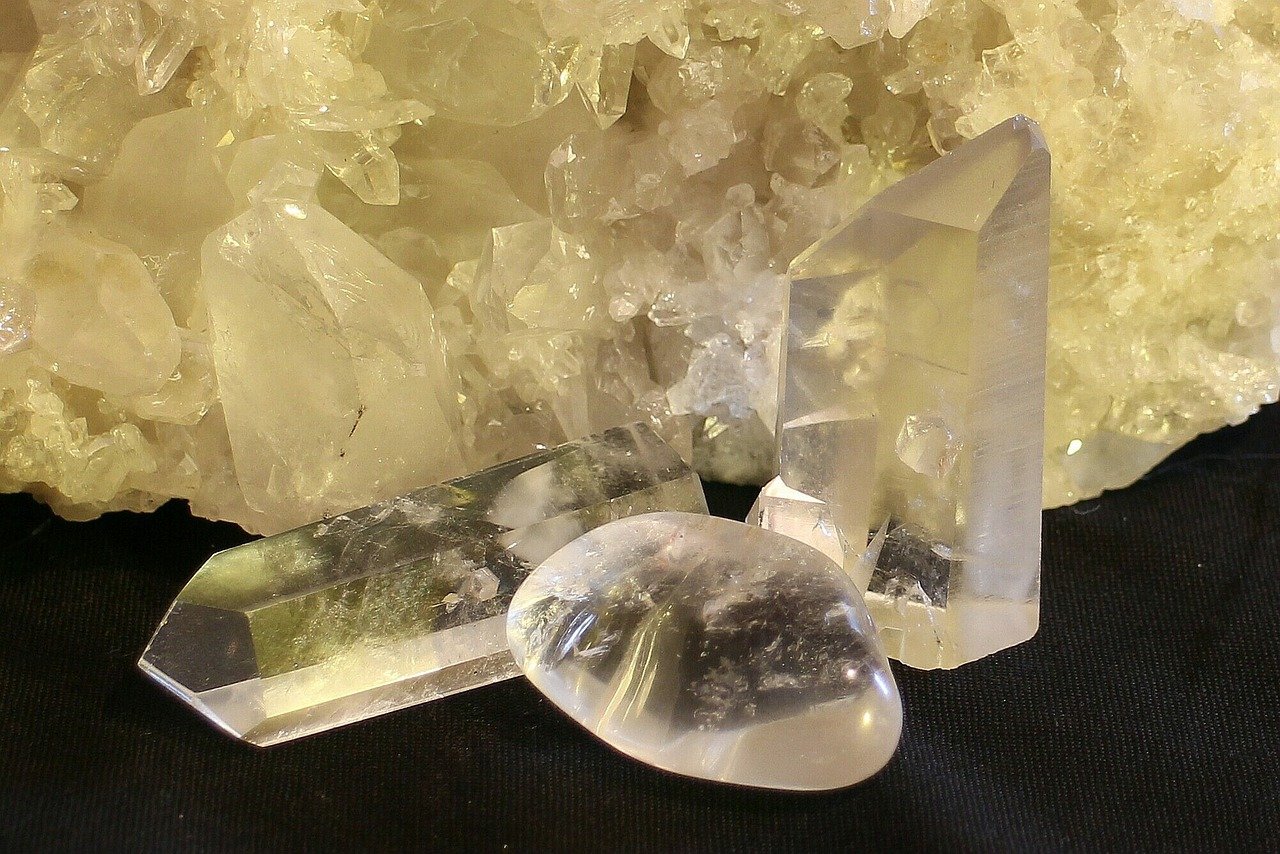
Simple At Home Tests (No Expert Tools Needed)
Water Drop Test
Place a small water droplet on the surface of your gemstone. A real gemstone usually has high surface tension, causing the drop to stay rounded instead of spreading out. On imitation stones like glass, the water tends to flatten or roll off. This simple method works best with transparent gems such as quartz, sapphire, and topaz.
Fog / Breath Test
Breathe gently on the gemstone to fog it up. Real stones disperse heat quickly, so the fog disappears within 1–2 seconds. Fake gemstones, especially glass or resin, retain heat longer and stay fogged up. This is a quick and safe way to test diamonds, sapphires, and rubies.
Weight / Density Comparison
Hold the gemstone in your hand or compare it with a similar sized real stone. Authentic gemstones often feel heavier due to higher density. Fakes made of plastic or resin are surprisingly lightweight, while glass imitations may not match the expected heft of the genuine mineral.
Visual Checks: Color and Clarity
Examine the stone under good light. Real gems often have color zoning, natural inclusions, or slight imperfections, whereas fake gemstones appear “too perfect” with flawless clarity and uniform color. A magnifying glass or simple loupe can reveal bubbles inside glass imitations.
Light Reflection Test
Hold your gemstone under light. Real gems sparkle with depth, brilliance, and unique reflections. Fake gemstones often produce dull or flat light. For example, a real diamond shows sharp, bright reflections, while cubic zirconia produces rainbow-like flashes that look artificial.
Understanding Gemstones: What Are They?
Gemstones are precious or semi-precious minerals that are cut and polished for use in jewelry or decoration. They come in a variety of colors, shapes, and types. The most common categories include:
- Natural gemstones: Formed naturally within the Earth.
- Synthetic gemstones: Lab created stones that mimic natural counterparts.
- Imitation stones: Materials designed to look like real gemstones but are made from different substances.
Proper gem identification ensures you can differentiate between these categories and understand the true value of the stone.
How to Identify a Real Gemstone Advanced Tests & Tools for Better Accuracy
Mohs Hardness Test
Each gemstone has a defined hardness on the Mohs scale, which measures scratch resistance. For instance, quartz is 7, while diamond is 10. By carefully testing whether a stone can scratch another material, you can narrow down its authenticity. However, be cautious scratching may damage softer stones.
Magnification / Loupe / Microscope
A 10× jeweler’s loupe or microscope reveals inclusions, growth lines, and internal features. Genuine gemstones typically show natural inclusions, while fake stones reveal gas bubbles, curved striae, or a glassy texture. This is one of the most reliable ways to distinguish authenticity.
UV Light / Fluorescence
Some gemstones glow under UV light, revealing unique patterns of fluorescence. For example, rubies may fluoresce bright red. However, this method is not foolproof, as not all natural stones react, and some synthetics are designed to mimic fluorescence.
Refractive Index (Refractometer)
The refractive index (RI) is one of the most precise ways gemologists identify gemstones. Each type of gem has a specific RI value that can be measured with a refractometer. Fake stones or glass imitations will show readings outside the natural gemstone range.
Spectroscope (Optional but Advanced)
A spectroscope separates light into different wavelengths and shows absorption patterns unique to each gem. This tool requires experience but is extremely accurate in professional gem testing.
Certified Lab Testing
For high-value purchases, always request a gemstone certificate from a trusted lab such as GIA, IGI, or AGS. These reports provide detailed analysis, including origin, treatments, and authenticity. Learn how to read certificates to avoid misleading or fake documents.
Checking the Color and Hue
Color is one of the first aspects to examine when identifying a gemstone. A natural sapphire exhibits a deep, vibrant blue, while emeralds have a lush green hue. If the gemstone appears too uniform or unnatural, it could be synthetic or treated.
Examining the Clarity and Transparency
Different gemstones have varying levels of clarity. Diamonds naturally contain inclusions, while emeralds often have visible fractures. If a gemstone appears flawless under magnification, it might be synthetic or glass.
Testing the Hardness of Gemstones
A gemstone’s hardness can be tested using the Mohs scale. Diamonds rank at 10, making them the hardest material, while opals range between 5.5-6.5. A simple scratch test against a known material can help differentiate softer stones from harder ones.
Looking for Natural Inclusions
Natural gemstones often contain inclusions that synthetic ones lack. Emerald inclusions are often described as “jardin” (garden), while rubies have needle-like rutile inclusions. A jeweler’s loupe or microscope can reveal these internal features.
Conducting a ultraviolet light and Luster Test
A gemstone’s interaction with light can indicate authenticity. Diamonds have a high refractive index and exhibit strong brilliance, while opals display a play of color. The type of luster whether glassy, silky, or dull can help distinguish between different gemstones.
Essential Tools for Gemstone Identification
To properly identify gemstones, professionals use specialized tools. Here are the most important ones:
- Refractometer: Measures the stone’s refractive index.
- Polariscope: Determines whether the stone is singly or doubly refractive. Double refraction can indicate specific gem varieties.
- Loupe or Microscope: Magnifies the gemstone to inspect inclusions and surface features.
- Gemstone Identification Chart: A reference guide for comparing physical and optical properties.
- Specific Gravity Test: Measures the stone’s density and helps determine its type.
Pleochroism: Understanding Gemstone Color Changes
Pleochroism is a fascinating optical property found in certain gemstones like iolite and tourmaline. When viewed from different angles, these gemstones display varying colors, showcasing a captivating play of hues. This unique characteristic adds depth and intrigue to the gemstone, as it appears to change color depending on the observer’s perspective. Pleochroic gemstones often exhibit a mesmerizing range of colors, making them prized for their dynamic and ever-changing appearance.
Lab-Created vs. Natural Gemstones – Key Differences
Lab-created gemstones are made to mimic natural ones but lack the unique inclusions and chemical properties of real stones. Synthetic diamonds, for example, have metallic flux inclusions, while natural diamonds contain tiny carbon inclusions.
natural Gemstone Identification Techniques
Visual Examination
Examining a gemstone’s color, clarity, and general look in either artificial or natural light is called a visual examination. Gemologists enlarge gemstones for closer inspection using loupes and microscopes.
Gemological Testing
The physical and visual characteristics of a gemstone are examined via the use of specific tools and methods in gemological testing. These examinations might consist of:
A refractive index
A refractometer determines a gemstone’s refractive index, which offers important details on its provenance and identity.
What happens to light as it travels through a gemstone is measured by its refractive index. It is possible to identify gemstones by using their unique refractive indices.
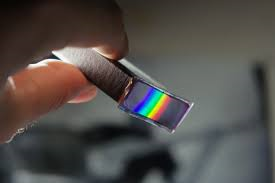
Spectroscope
A spectroscope helps detect certain elements or impurities found in gemstones by analyzing the spectrum of light emitted or absorbed by the stone
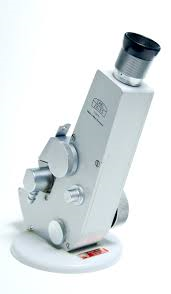
Dichroscope
By dividing light into its two polarized components, a dichroscope analyzes a gemstone’s pleochroism and helps gemologists determine its distinct color characteristics.
How to Identify Different Types of Gemstones
How to Identify Real Jade
Real jade is either jadeite or nephrite, and both have a smooth, waxy texture. The easiest way to identify real jade is by its cool touch, high density, and toughness. Genuine jade gemstones should not scratch easily, as they are highly durable. When held against a light source, natural jade may show fine fibrous structures or subtle color variations, unlike fakes, which appear uniform. A sound test can also help—real jade produces a deep, resonant sound when tapped, whereas imitations sound dull.
How to Identify Gems
The best way to identify gems is by analyzing their physical and optical properties. Natural gems typically display slight imperfections, color variations, and unique inclusions. Gemstones like amethyst, peridot, and garnet show distinct hues and luster. If you’re unsure about a gem’s authenticity, a professional gemologist can conduct tests such as refractive index measurement, UV fluorescence, or specific gravity tests to verify if it is real.
How to Identify Raw Opal
Raw opal is often found in a matrix of rock and exhibits an uneven surface with veins of color running through it. A key sign of genuine raw opal is its play-of-color, a unique iridescence that shifts when viewed from different angles. Fake opals usually have a uniform, static color and lack the natural flashes seen in real opals. Additionally, raw opals are relatively soft and should not scratch glass easily.
How to Identify Rough Sapphire
Rough sapphire can be identified by its incredible hardness, second only to diamond. A real sapphire will not scratch easily and can cut glass. Most natural rough sapphires have a hexagonal crystal structure and appear in blue, yellow, or pink hues. They also have natural inclusions, while synthetic versions tend to be flawless. Holding a sapphire under bright light may reveal color zoning, which is common in natural stones but absent in lab-grown ones.
How to Identify Raw Emerald
A raw emerald has a distinct green color, often with slight bluish or yellowish tones. When identifying real emeralds, look for natural inclusions, known as “jardin,” which resemble tiny gardens or moss-like structures inside the stone. Unlike glass or synthetic emeralds, real ones do not have an overly uniform color. Emeralds are not as hard as diamonds or sapphires, so they should not scratch glass easily but will resist surface damage better than imitations.
How to Identify Raw Moonstone
Raw moonstone has a pearly, milky sheen known as adularescence, which creates a glowing effect when light moves across the surface. A genuine raw moonstone will exhibit this shimmer, while fake versions will appear dull. The stone is relatively soft, making it easy to scratch. Natural moonstones are often found in white, peach, or gray shades, with a slightly translucent quality.
How Do You Identify Gemstones
Gemstones can be identified by their color, hardness, specific gravity, and luster. Checking for inclusions under a magnifying glass can reveal if a gemstone is natural or synthetic. Professional tests like UV fluorescence and refractive index measurements help confirm authenticity. If you’re uncertain, consulting a gemologist is the best way to verify a stone’s identity.
How to Identify a Raw Ruby
A raw ruby is deep red with slight variations in tone and natural inclusions. It has a hexagonal crystal structure and is extremely hard, ranking at 9 on the Mohs scale. If you suspect a ruby is fake, try scratching glass—real rubies should not be easily scratched. Fake rubies are often made of glass or synthetic corundum and lack the brilliance of genuine stones.
How to Identify Jasper Stone
Jasper is an opaque variety of chalcedony that comes in various colors and patterns. Real jasper stones are dense, with unique banding, speckles, or swirls. Fake jasper often has an overly uniform color. If you wet a real jasper stone, the patterns remain visible and do not fade.
How to Identify Painite
Painite is an extremely rare gemstone that appears in reddish-brown or deep amber hues. Real painite has a high density and a vitreous luster. Due to its rarity, most painite specimens undergo lab testing to confirm their authenticity. If a stone is too cheap, it is likely fake.
How to Identify Raw Garnet
Raw garnet is typically deep red, orange, or brown and has a glassy luster. It is a hard stone and does not scratch easily. Natural garnets have visible inclusions and a high refractive index, giving them a bright sparkle when polished.
How to Identify Raw Sapphire
Raw sapphires are extremely durable and often appear with a rough, hexagonal shape. Their deep blue color may show zoning when viewed under a light source. Real sapphires should be able to scratch glass and resist acids.
How to Identify Real Crystals
Real crystals have natural imperfections, slight color variations, and unique internal structures. They feel cold to the touch and do not have a uniform, plastic-like appearance. Checking for bubbles inside a stone can help natural crystals rarely have air bubbles, but glass imitations do.
How to Identify Real Opal
Genuine opal has a play-of-color that moves across the surface when tilted. Fake opals, such as synthetic ones, have a too-perfect pattern or lack this optical effect. Natural opal also has an irregular internal structure, whereas imitations look overly uniform.
How to Identify Real Turquoise
Turquoise has a distinct blue-green hue with a natural matrix of veins running through it. Fake turquoise is often dyed howlite, which lacks the authentic webbing and can fade over time. Real turquoise should not be overly glossy, as it has a matte, slightly porous texture.
How to Identify Sapphires in the Rough
Rough sapphires are highly durable and often exhibit a deep blue or yellow color. Real sapphires show color zoning and inclusions when examined under magnification. Their high hardness makes them difficult to scratch.
How to Identify Taaffeite
Taaffeite is an extremely rare gemstone that appears in pink, mauve, or lavender shades. It is often mistaken for spinel, but its double refraction helps distinguish it. Natural taaffeite is rarely found in jewelry, so if you encounter one, it should be lab-certified.
How to Tell Real Crystals
To determine if a crystal is real, check its temperature natural crystals feel cold even in warm conditions. Authentic crystals have internal imperfections, whereas fake ones are too perfect. Another test is hardness real quartz crystals, for example, can scratch glass, while fakes cannot.
Quick Checklist: Are Your Gemstones Real?
Use this checklist before you buy or accept a gem:
- ☐ Natural inclusions visible under magnification
- ☐ Stone feels dense/heavy for its size
- ☐ Clears fog quickly (breath test)
- ☐ Refractive index matches expected RI for that gemstone
- ☐ Certification from reputable lab
- ☐ Seller is transparent / has good reviews / returns policy
Certified Lab Testing & Reports
The ultimate way to verify authenticity is through a gemstone certification from reputable labs such as:
- GIA (Gemological Institute of America)
- IGI (International Gemological Institute)
- AGS (American Gem Society)
- SSEF (Swiss Gemological Institute)
Certificates include gem type, origin, treatments, and authenticity. Learn to recognize genuine reports vs fake certificates printed by sellers.
FAQs: Identifying Real vs Fake Gemstones
Use simple methods like fog test, water drop test, and visual inspection for inclusions.
Globally, GIA, IGI, and AGS are the most trusted. Locally, check PIG or GII.
No. They share the same composition as natural stones but are lab-created.
Yes, but less than untreated stones. Treatments must be disclosed.
Some softer gems may get scratched use with caution.
Not always. Only certain gems fluoresce, and some synthetics are designed to mimic this.
Use a 10× loupe. Look for natural growth lines, crystals, or fractures not bubbles.
Imitations are look-alikes (glass, resin), while synthetics are real but lab made.
Yes, but only from sellers with recognized certifications and strong return policies.
Low prices often indicate glass or imitation stones being passed off as real.
Conclusion
Identifying real vs fake gemstones requires a mix of simple at-home tests, advanced gemology tools, and trusted certifications. While quick checks like the fog test and water drop test help spot obvious fakes, advanced methods such as refractive index and lab testing provide definitive proof. By understanding inclusions, hardness, fluorescence, and certification, you’ll be able to protect yourself from scams and confidently buy gemstones for jewelry, healing, or investment.


